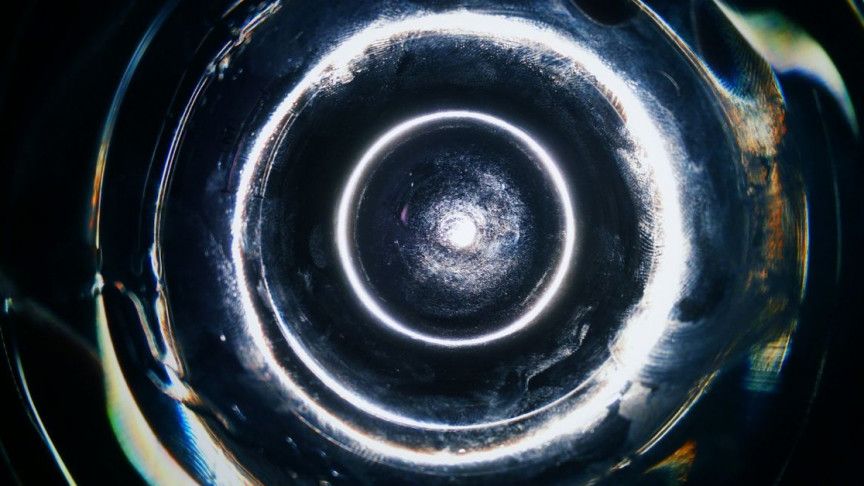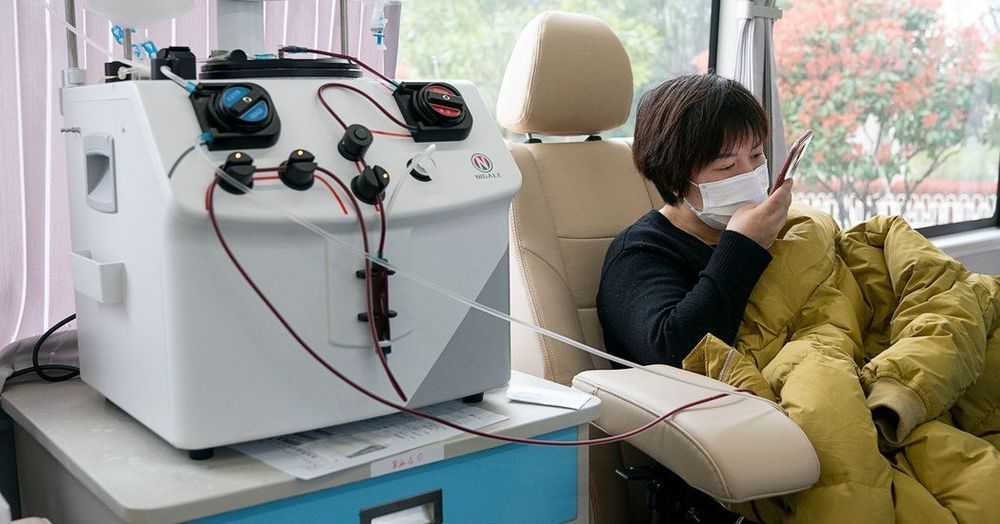Sandia National Laboratories distinguished technical staff member Juan Elizondo-Decanini developed a new configuration for neutron generators by turning from conventional cylindrical tubes to the flat geometry of computer chips. The Neutristor is an ultra-compact, disposable, neutron generator 1000 times smaller than the closest competitor. The most practical application, and the most likely to be near-term, would be a tiny medical neutron source implanted close to a tumor that would allow cancer patients to receive a low neutron dose over a long period at home instead of having to be treated at a hospital. Elizondo-Decanini says the technology is ready to be licensed for some commercial applications, but other more complex commercial applications could take five to ten years.
Get the latest international news and world events from around the world.

Teleportation is Here, But It’s Not What We Expected
In 2005, the obituary of physicist Asher Peres in the magazine Physics Today told us that when a journalist asked him if quantum teleportation could transport a person’s soul as well as their body, the scientist replied: “No, not the body, just the soul.” More than just a simple joke, Peres’ response offers a perfect explanation, encoded in a metaphor, of the reality of a process that we have seen countless times in science fiction. In fact, teleportation does exist, although in the real world it is quite different from the famous “Beam me up, Scotty!” associated with the Star Trek series.
Teleportation in real science began to take shape in 1993 thanks to a theoretical study published by Peres and five other researchers in Physical Review Letters, which laid the foundation for quantum teleportation. Apparently, it was co-author Charles Bennett’s idea to associate the proposed phenomenon with the popular idea of teleportation, but there is an essential difference between fiction and reality: in the latter it’s not matter that travels, but rather information, which transfers properties from the original matter to that of the destination matter.
Quantum teleportation is based on a hypothesis described in 1935 by physicist Albert Einstein and his colleagues Boris Podolsky and Nathan Rosen, known as the EPR paradox. As a consequence of the laws of quantum physics, it was possible to obtain two particles and separate them in space so that they would continue to share their properties, as two halves of a whole. Thus, an action on one of them (on A, or Alice, according to the nomenclature used) would instantaneously have an effect on the other (on B, or Bob). This “spooky action at a distance”, in Einstein’s words, would seem capable of violating the limit of the speed of light.

Black holes: The ultimate quantum computers?
Circa 2006
By Maggie Mckee
Nearly all of the information that falls into a black hole escapes back out, a controversial new study argues. The work suggests that black holes could one day be used as incredibly accurate quantum computers – if enormous theoretical and practical hurdles can first be overcome.
Black holes are thought to destroy anything that crosses a point of no return around them called an “event horizon”. But in the 1970s, Stephen Hawking used quantum mechanics to show black holes do emit radiation, which eventually evaporates them away completely.

The Thorium Car Runs For 100 Years With Only 8 Grams Of Fuel and Emission-Free
The amazing car pictured is a theoretical concept car that would run for 100 years with only 8 grams of fuel. Such a car would be powered by thorium, one of the densest materials on our planet.


For His Next Trick, Elon Musk Will Revolutionize HVAC Systems
Because running Tesla and SpaceX and building a new Starship every 72 hours so he can colonize Mars isn’t enough, now Elon Musk would really love to build an efficient and quiet HVAC system for home use, according to Inverse. It could even piggyback the existing work Tesla has done to make heaters for its newest vehicle, the Model Y.
The first few Tesla vehicles used an electric cabin heater to replace a traditional fuel vehicle’s reliance on internal combustion engine heat. Trying to find the right kind of heater has been challenging at times for Tesla, which was faced with reinventing the wheel, so to speak. Before now, engines made the heat as a secondary effect of combustion.

Google Scholar
Based on a lot of study it may be possible that if naturally derived dmt having quantum entanglement properties that someday it could be used to naturally teleport people. Especially if can essentially have suppositions properties that it may in fact allow an interdimensional portal quantum mechanically speaking it also said that cannabis did not start on earth either and is an alien plant. It may that someday we could take a pill to teleport through the fabric of space time with a biochemical means but it would involve a sort higgs mode or higgs boson level quantum teleportation for that amount of energy. But it may eventually lead to real teleportation in human beings naturally someday since it already holds those properties.

Note on Posthuman Resilience
This post is adapted from a paper presented at a workshop organised by the Open University’s PRiME (posthuman resilience in major emergencies) research group held in London, 18th-19th October 2016.
********************************
Resilience – understood as the capacity to recover from perturbations and resume “normal functioning” – appears seems to be a generic rather than domain specific property. It has a general application to complex systems at all scales and levels of complexity, and applies across the notional and contested divide between the natural and the artificial. It thus seems consonant with a “flat” posthuman world in which humans – rather than having privileged status – are just a distinctive being amongst other – similarly distinctive – beings. [1].